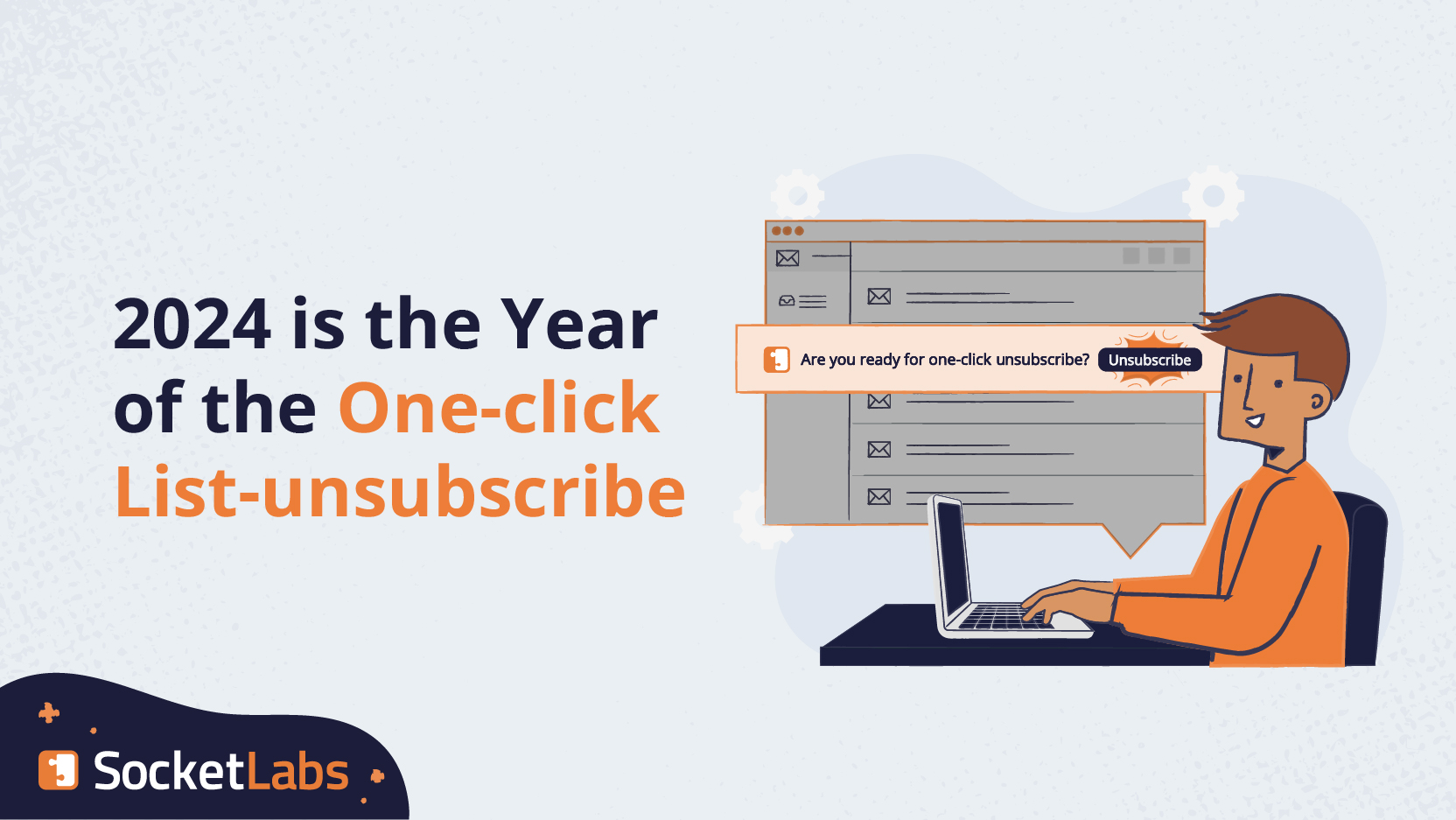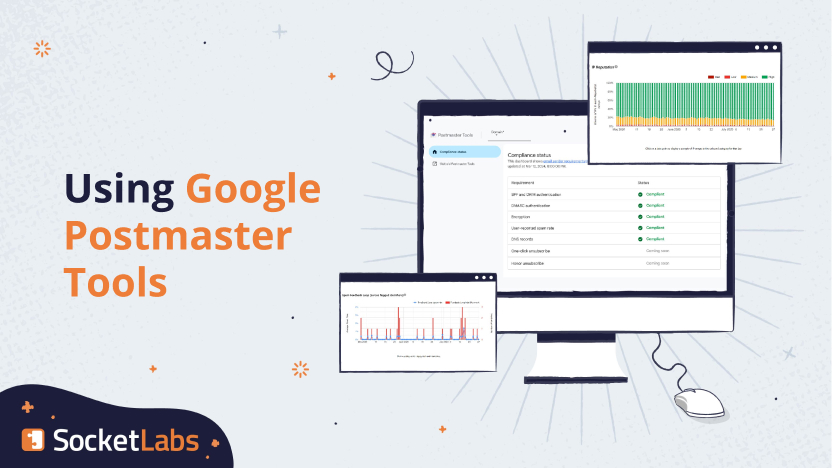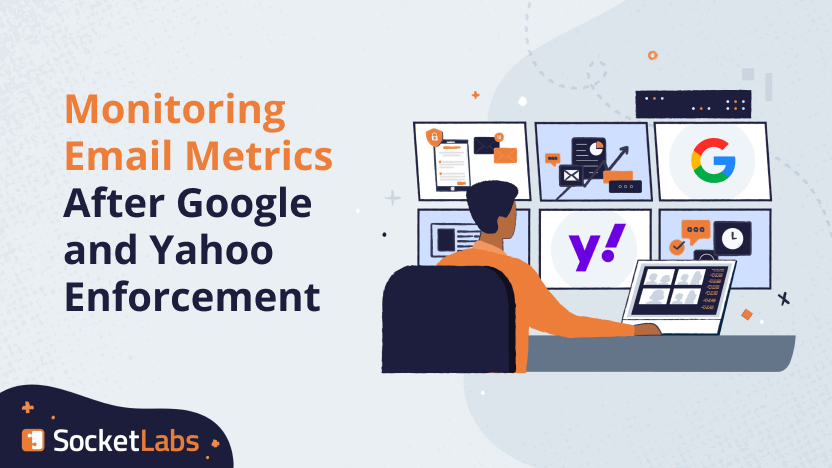Webinar Highlights: Google & Yahoo Talk Email Marketing in 2024

Last week, we hosted an interactive discussion featuring representatives from the product teams of Google and Yahoo!, who have recently released a new set of requirements that applies to all senders who are looking to have their emails delivered to the inboxes of recipients at these providers. The goal of this session was to move beyond the checklist and have a candid conversation about what a successful email program looks like through the eyes of a mailbox provider.
So, instead of sharing a full webinar recording with all of the distractions that come from talking heads like me, we’ve decided to shine a spotlight on the parts we think will be the most helpful to senders like you reaching their email goals in 2024.
A huge “thank you” goes out to our special guests, Clea Moore, Principal Product Manager for Yahoo! and Dan Givol, Group Product Manager for Google for passing candid and insightful guidance around like a hot potato…the delicious kind with all that jazz you love on top.
So, let’s dig in, shall we?
Email Success Requires You to Move Beyond the Checklist
You may have noticed that the title of our discussion with the mailbox providers was about how to be successful with your email marketing. It didn’t actually say anything about their new requirements, or compliance at all, really, even though it was a central part of our conversation.
That’s because success, when it comes to email, encompasses a lot of things: only one of which is complying with Google and Yahoo’s new sender requirements. But compliance is table stakes in 2024, not a guarantee of inbox placement.
If you want to consistently reach the inboxes of your email recipients, you need to turn your attention to gaining (and keeping!) their trust, their loyalty, and their positive attention by helping them stay safe while using their inboxes. You also need to send emails they actually look forward to receiving.
So, let’s get into what you need to do to be successful with email in 2024, starting with the basics.
Complying With The New Sender Requirements, In a Nutshell
Since Google and Yahoo posted their requirements months ago (and we did a deep rundown about them on our blog), we won’t get too deep into what their new rules are. However, we did ask Clea to give us the quick overview of what Yahoo is looking for today.
As Clea noted, the high points are to authenticate your sending domains with SPF, DKIM, and DMARC, keep spam complaint rates low…like consistently below 0.1% and always below 0.3%, and to make it easy for recipients to unsubscribe. Here are some links where you can view the full list of sender requirements straight from Google and Yahoo.
When it comes to Google, Dan provided a great analogy to explain what their rules do for both senders and recipients, and why they decided now was the right time to make this change. Ultimately, it’s all about brand protection and creating trust with your email audience.
Much like your sender reputation, trust takes time to build. But that time pays dividends when a loyal recipient becomes a loyal customer…. maybe even one who tells their friends about how great your product or service is.
Why Email Authentication is Important
The overarching takeaway from our session was that Google and Yahoo are working hard to ensure a more secure environment for their users which is why email authentication is at the very core of the rules they implemented this year.
Clea explained why authentication is so important:
Authenticating your mail is what allows mailbox providers to identify who you are and properly attribute your reputation to you within their systems and not to somebody pretending to be you by abusing your domain. I don’t think I have to tell anybody reading this that having your domain spoofed can damage your sender reputation and your relationship with email recipients. Neither is going to help you reach your goals with email.
Why Now?
We’ve established these requirements aren’t necessarily groundbreaking mandates. These are best practices known to the email world for years.
So you might be wondering, why now?
Simple: Safety is more important than ever. The online world is getting more dangerous, with bad actors becoming more skilled and innovative.
Here’s Clea explaining how Yahoo is committed to the safety of their users, and why it’s our responsibility as senders to ensure we’re taking all the steps necessary to help keep their users (ahem, our recipients) out of harm’s way.
Putting this into context: Clea shared that ~95% of the mail Yahoo receives on any given day is really bad mail — phishing, malware, and other stuff that they don’t even accept into their servers. The remaining ~5% of it is gray and/or white mail, and they need to sort out which of that 5% is trusted senders their users want to hear from vs something potentially dangerous for them. The rise of AI has only accelerated the volume and sophistication of spam, making this task even more challenging for mailbox providers.
I love how Dan described the need for this change…
Essentially, you don’t want to be the slowest moving person to run away from the bear. Other people are moving – they see the data, they’ve heard the rationale, they agree with it, and they’re moving in the right direction – which is further away from that bear! And the longer it takes you to move, the more likely you are to be targeted because the fraudsters can find you and they will abuse your high-trust account if they can.
Speaking of not poking bears… Clea also spent some time talking about the role the unsubscribe process plays in helping you maintain low spam complaint rates.
One-click List-unsubscribe Will Help, Not Hurt You
This one is causing senders some stress because it feels like making it easier for people to unsubscribe will cause yours lists to dwindle in size.
But Clea’s message is clear…this move will help, not hurt your deliverability.
If you’re skimming and you skipped that last clip from Clea, you might wanna double back: she’s talking about how senders are seeing ~30% reductions in spam vote rates on average, simply by making the unsubscribe process easier. Considering how impactful spam complaints can be for deliverability, this alone is reason enough to get your one-click list-unsubscribe in place as soon as you can, even if Google and Yahoo aren’t technically requiring it for a few more weeks.
Other Deliverability Recommendations from Yahoo and Google
The best part of our session was hearing both Dan and Clea share their advice for improving email performance.
Put your data to work.
For Clea, it’s all about using your data to make better decisions.
At SocketLabs, we couldn’t agree more with this recommendation. It’s why we’ve built an email reporting suite putting your email data to work to surface comprehensive, actionable insights within a few taps of your track pad. We’ve also created several resources on monitoring your email performance and complying with the new sender requirements.
Put the recipient first.
Dan urges senders to lean into these requirements early and both he and Clea highlighted the importance of being recipient-focused when designing your email campaigns. Give it a listen.
Keep your spam complaints low.
Most people know maintaining a low spam complaint rate is important, but hearing it from the folks in charge has a slightly different ring to it. Here’s what Clea had to say on the spam complaint threshold published in Yahoo’s sender requirements, and what you should do if yours is high.
One problem: spam complaint issues aren’t always easy to spot if you’re not monitoring your complaint rates at each mailbox provider using the tools available to you. Luckily, both Yahoo and Google have tools (and tips!) to help you out.
Using Mailbox Provider Tools
Google’s launched a v2 of their Google Postmaster Tools (GPT) interface to give senders a better idea of what’s going on with their email performance.
Dan shared how GPT works, why it’s important to monitor, and his recommendations for using the data in GPT to improve your performance:
Yahoo also offers their own tools to help senders understand what’s going on at their mailboxes. Clea explained what’s available to senders today:
At SocketLabs, we provide destination-level reporting so you can easily see how your spam complaint rate is looking with providers like Yahoo. We’ve also got something called StreamScore, calculated using more than 26 data points including both internal and external data (like info from Google Postmaster Tools and spam FBLs), to give you a fast look at your overall reputation. A spike in complaints would show up as a drop in your reputation score.
Where Email Goes From Here
Both Clea and Dan made it clear this change is not about Google or Yahoo. It’s about creating a trusted environment for our mutual customers: email recipients. The goal is to keep them safe and happy within their inboxes, and also to protect our own brands from becoming a target for abuse.
In fact, Dan is sure the wave of more stringent email security standards isn’t ending with Google and Yahoo. His advice is to embrace these new sender requirements as a means to get the security ball rolling within your organizations.
The Final Say
Dan and Clea shared so much great information during our hour together. A few concepts to keep in mind:
- These security standards are in place for your protection. The mailbox providers are not doing this to punish you. They want to make sure you are secure; that nobody can hijack your domain because one of the requirements is missing. So, do yourself a favor and fall in line with what’s expected of you (and everybody else who wants to reach the inbox.)
- Data is your best friend. You have Google Postmaster Tools to give you a good sense of where you stand with Google, a spam feedback loop from Yahoo to keep a close tab on negative sentiment from recipients, plus all of the delivery and engagement data available within your ESP. Use this data to inform our future decisions, but remember, these tools tend to look backwards, not forwards, so you need to use that information directionally as opposed to the letter of the law. .
- Refer to Google and Yahoo’s FAQs for guidance. both providers have been actively updating their resources to provide clarity on the top questions they’re getting from senders. Go here first if you have any questions about what the requirements are or how to implement them. If you need some backup after that, reach out!
- Embrace the spirit of the requirements rather than the just the letter. Instead of trying to just meet the bare minimum, assume that the goal behind this is creating a better, cleaner channel. As part of that, realize this is likely just the first step, and so you should move in the right direction — for your brand and for the ecosystem. Take this moment in time to understand email authentication — invest in DMARC in the right way and have a vision for the security of your brand.
- Carry on and send great email. Ultimately, these requirements are not new, and they’re a good thing for everybody involved. The sooner you get on board, the better off you’ll be. Unless running frantically away from hungry bears is your kind of thing.
We hope you’ll join us for our next webinar. We have roundtables monthly, and our customers have regular opportunities to connect with us at Office Hours as well. Keep an eye on our social for announcements about special events coming soon!




